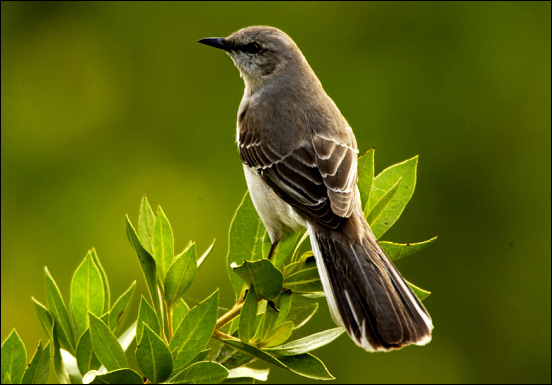

Someone once said it is a sin to kill a mockingbird. After all, these birds sing many beautiful tunes, some they've created themselves and others they've borrowed from nature's composers, be they birds, other creatures, or perhaps even the sound of bubbling water.
This unpretentious bird is drably colored, in gray and white, but it can also be feisty! Not only does it defend its territory from other birds, it may attack much larger intruders, such as cats and dogs, that stray into its domain.
You may see a mockingbird walking on the ground in search of insects.
It might be doing a strange sort of dance, flicking its wings and tail. Perhaps this
helps it attract or spot potential prey. These birds also love fruit, though, and they
may devour large numbers of cultivated berries. For this reason, they have been
persecuted by many. But pause once again, and listen to the song. You'll understand
why it really would be a sin to kill a mockingbird.

Listen to the Audio (mp3 format) as recorded by KTEP, Public Radio for the Southwest.
Contributor: Kodi R. Jeffery, Centennial Museum, University of Texas at El Paso.
Desert Diary is a joint production of the Centennial Museum and KTEP National Public Radio at the University of Texas at El Paso.

Northern Mockingbird (Mimus polyglottis). Photograph by Ryan Hagerty, courtesy of the U.S. Fish and Wildlife Service.
Derrickson, K. C., and R. Breitwisch. 1992. Northern mockingbird. Birds of North America 7:1-25.
Sounds of Mockingbirds. Museum of Michigan Museum of Zoology.